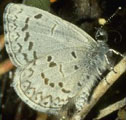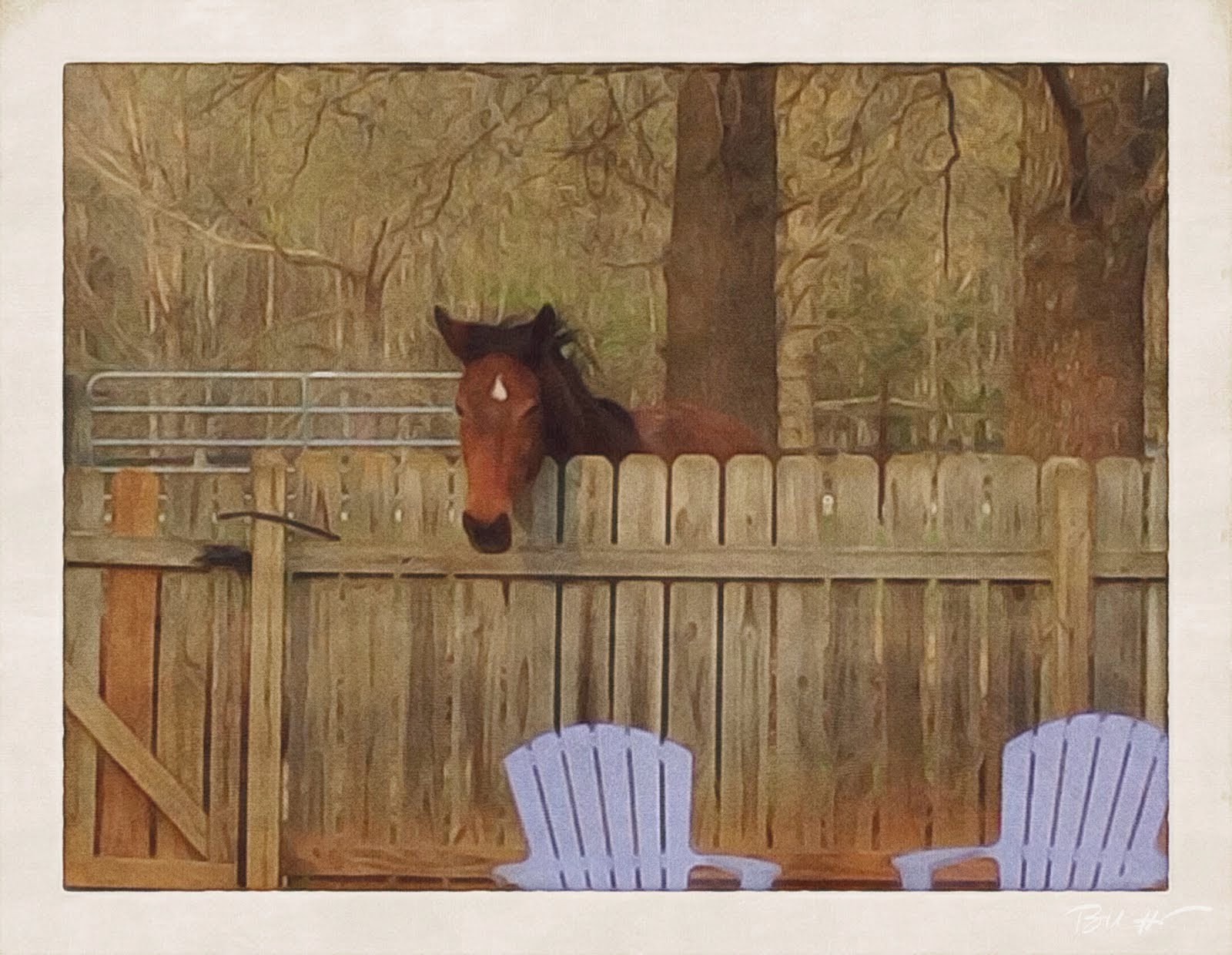I’ve put a couple of these in my shady driveway bed, in back to provide a backdrop to the flowering plants up front. They are pollinator plants and have deep maroon flowers that will be a nice thing to see both looking out the windows on that side of the house, as well as driving in and out from the garage. I’m hoping they do well in this shady area that can also get some water when we have a lot of rain.
Saturday, October 16, 2021
What’s Coming Up In The Garden, 75: spicebush
I’ve gotten behind again on updating the plantings for this fall. I put in two spicebush plants in the bird haven area - there were a couple of bayberries along the inner fence line that didn’t like it there and died, presumably because the rainwater creek was too much for them. Spicebush will tolerate that just fine, so I’m trying them there and we’ll see.
They’re great for birds offering both food and shelter and are a host plant for a species of swallowtail butterflies. I’m looking forward to seeing how they do.
Tuesday, October 05, 2021
November Hill farm journal, 139
Playing catch up with the native plantings here, as we had some busy days and my routine got messed up a bit. I have my vines and shrubs left to go and then there is one more batch that I’ll be getting in later this month.
However, I did have a moment this weekend to snap a quick photo of the corner of the oldest of the native pollinator beds I’ve put in. This one is three years old and has really come together well.
This is the fall bloom in this corner. I love how things are intermingling and the textures are varied. I planned some of this, and some volunteered here - the blue mist front and center - and overall I’m very happy with it.
We’ve had some rain today and more to come so my watering is taken care of for all the newly-planted things. A nice gift for the week.
In other news we have closed and started moving furniture into the mountain house, and learned yesterday that our back-up offer on the adjoining 175 acres is now the primary offer. We should be closing on that in a couple of weeks. I’m very happy that this worked out this way. The land was in immediate danger of being developed, and it’s too beautiful for that to happen. It’s nestled in among thousands of acres of protected land and now it too will be protected.
It’s October! I’m barely able to believe it but here we are, entering my most favorite season of the year. May it be a good season for us all. We need it, for sure.
Tuesday, September 28, 2021
November Hill farm journal, 138
A break in the plant series today, though of course some of what’s going on is me planting things. Today we got the arrowwood viburnum in, and I watered everything in the bird haven area since we had a hot day today. The stones are placed, and we need another load, so that’s on the list.
The butterfly bush in the grassy front “yard” was removed today in advance of a new/small bed that will angle the corner on that side of the grassy yard area. Its blooms had finished so it was time to get rid of it. Mowing that small grassy area will be a lot easier, I’ll have room for this new/small bed, and I planted a grouping of butterfly weed in the walkway strip to offer something next year in its place.
We still have a number of new shrubs to put in, a couple of sassafras trees, and two new climbing vines. I’ll feature all these over the next week or so.
A few photos from today, starting with the wetter end of the bird haven area. We’ll fill in the rock, spread it further toward the inner fence line, and maybe wrap it around the bed of dwarf crested irises. The rock area is where most of the rainwater ends up when we get a lot of rain, and the rocks slow it down some. Unfortunately we can’t dig in the area to create a proper rain garden because telephone and internet lines go through here. Why they didn’t follow the fence line up the hill I do not know. If they ever put in fiber optic they’re going to run those lines up the side of the driveway and to that side of the house, which will be so much easier to deal with if any repairs are ever needed.
In other news, Keil’s primary vet is going on maternity leave at the end of this week and she’s coming one more time to do his acupuncture before we switch to the interim vet. Keil Bay and I have a surprise for her. She’s been such a great support for both him and for me through this EPM year.
And on Thursday we are closing on the new house. I’m excited and also a bit overwhelmed with the furnishing side of things. But as is always the case, I had to notch myself down some and remind myself that everything does not have to happen overnight. It’s a process. Slow down and let it unfold. The key to a more peaceful life, for sure!
Sunday, September 26, 2021
What’s Coming Up In The Garden, 74: arrowwood viburnum
Doug Tallamy mentioned this as a highly beneficial plant to put in if you’re wanting to help insects, birds, and other wildlife. It’s native in many states and offers year round interest in the garden. I was happy to find one at this year’s NCBG plant sale, though I wasn’t sure if it would go in Poplar Folly or the bird haven garden area.
After being in the bird haven space yesterday I decided that this will go in the very corner of that area where it will have room to round out and create both a screen and mid-height layer in this garden space. From the street side it will be behind the southern bayberries that are outside our front fence, and to the right of a lovely redbud that sits just outside the corner.
From inside the bird haven area, it will be at the top corner, with hearts a bustin’ and southern shield ferns in front of it. In my mind’s eye, it will be perfect. Sometimes my mind’s eye is accurate, and sometimes I don’t quite nail it, but I’m going to give this a try.
More on this lovely shrub:
Viburnum dentatum
Viburnum dentatum L.
Southern Arrowwood
Caprifoliaceae (Honeysuckle Family)
Synonym(s):
USDA Symbol: vide
USDA Native Status: L48 (N)
A 6-8 ft. shrub, sometimes taller, with multiple, erect-arching stems in a loose, round habit. White, flat-topped flower clusters are followed by dark blue berries. Lustrous, dark-green foliage turns yellow to wine-red in fall. A shrub with downy twigs, coarsely toothedleaves, and flat-topped clusters of small, white flowers. Some botanists recognize two separate species for this highly variable plant, the other being northern Arrowwood (V. recognitum) with smooth twigs.
Plant Characteristics
Duration: PerennialHabit: Shrub
Leaf Retention: Deciduous
Leaf Arrangement: Opposite
Leaf Complexity: Simple
Leaf Shape: Elliptic , Ovate
Leaf Margin: Serrate
Size Notes: Many branced shrub to 10 feet.
Leaf: Shiny dark green above, pale below.
Autumn Foliage: yes
Flower: Flowers 2-4 inches across.
Fruit: Black, Purple 1/3 inch long.
Size Class: 6-12 ft.
Distribution
USA: AL , AR , CT , DC , DE , FL , GA , IA , IL , IN , KY , LA , MA , MD , ME , MI , MO , MS , NC , NH , NJ , NY , OH , PA , RI , SC , TN , TX , VA , VT , WI , WVCanada: NB , ON
Native Distribution: FL to e. TX, n., especially on the Coastal Plain to MA & OH
Native Habitat: Stream banks; moist woods
Growing Conditions
Light Requirement: Sun , Part Shade , ShadeSoil Moisture: Moist
Soil pH: Acidic (pH<6.8)
Soil Description: Dry to wet, acid soils and sands.
Conditions Comments: Flood, insect and disease tolerant. Suckers freely from base and transplants well. Most soil-adaptable of the viburnums. Pest free.
Benefit
Use Wildlife: Gamebirds, songbirds and small mammals. Attracts Eastern Bluebird, Northern Flicker, Gray Catbird, and American Robin.Conspicuous Flowers: yes
Attracts: Birds , Butterflies
Larval Host: Spring Azure
Value to Beneficial Insects
Special Value to Native BeesSpecial Value to Bumble Bees
Supports Conservation Biological Control
This information was provided by the Pollinator Program at The Xerces Society for Invertebrate Conservation.
Butterflies and Moths of North America (BAMONA)
| Spring Azure (Celastrina "ladon" )  Larval Host |






